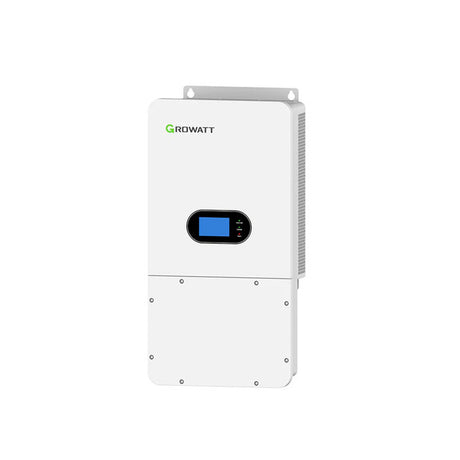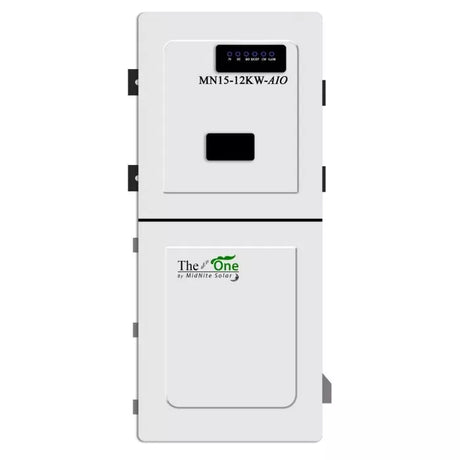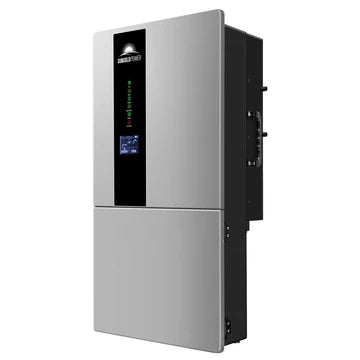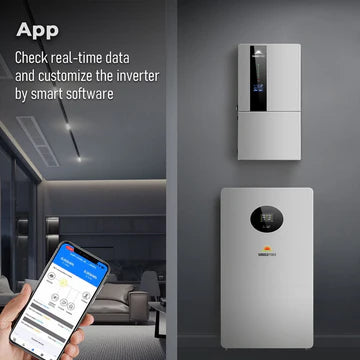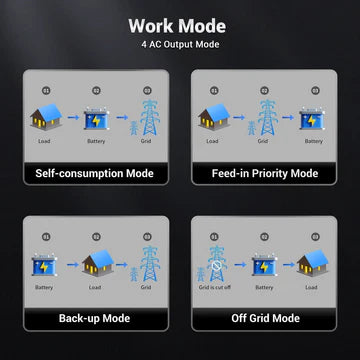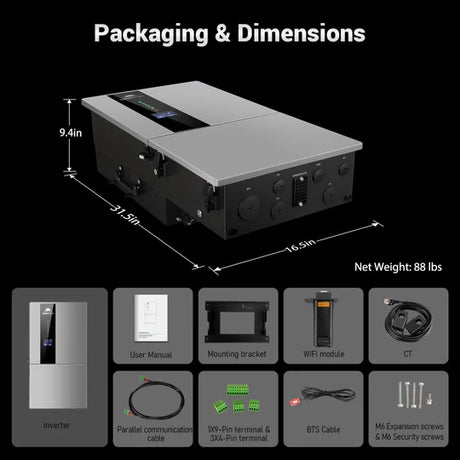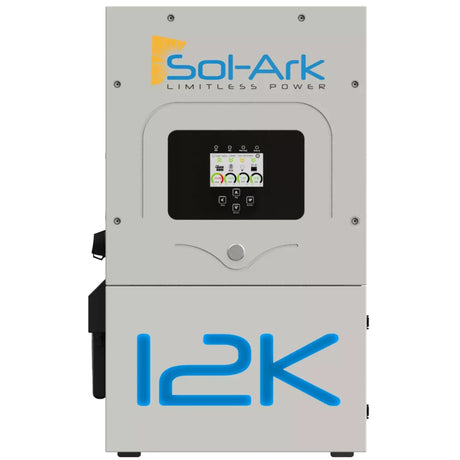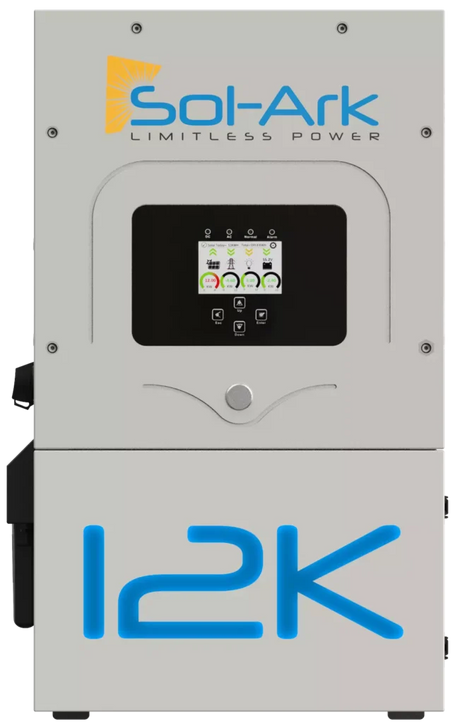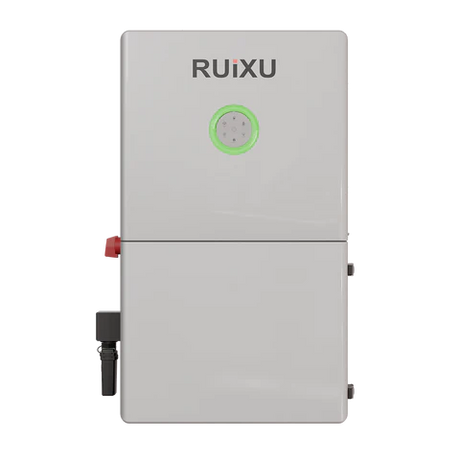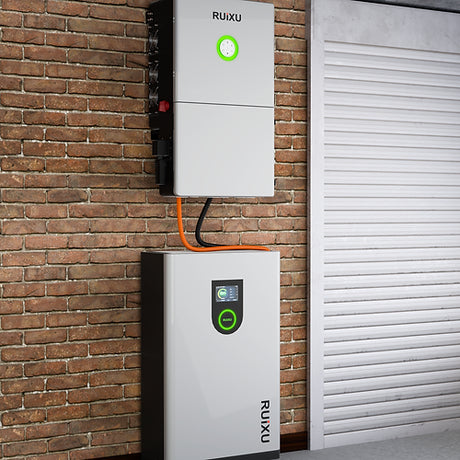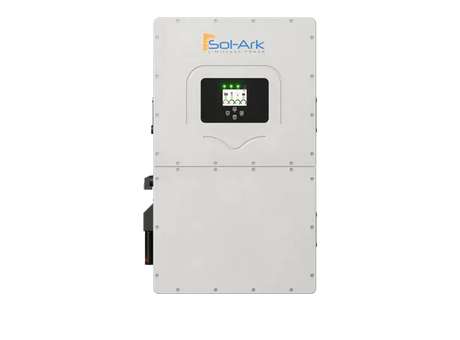Midnite Solar
$5,650.00$5,999.00Unit price /Unavailable- Up to 11% off
Sol-Ark
From $6,250.00$6,999.00Unit price /Unavailable - 16% off
- Up to 19% off
Sol-Ark
From $4,850.00$5,999.00Unit price /Unavailable - 23% off
Ruixu
$3,299.00$4,299.99Unit price /Unavailable
What Is a Hybrid Solar Inverter?
Hybrid solar inverters are power management devices that seamlessly integrate multiple energy sources—solar panels, battery storage, and utility grid—into one unified system. Unlike traditional inverters that only convert DC power from solar panels to AC for home use, hybrid models manage energy flow between all components.
They automatically prioritize solar power during peak production, store excess energy in batteries for later use, and draw from the grid only when necessary, creating an efficient hybrid solar power system.
How Hybrid Solar Inverters Work
At their core, hybrid solar inverters perform multiple functions simultaneously. During daylight hours, they convert DC electricity from your solar panels into usable AC power for your home. At the same time, they direct surplus energy to charge your battery storage system. When solar production exceeds consumption and batteries are full, excess power feeds back to the grid, earning you credits through net metering.
In the evening hours, during outages, or bad weather, the inverter switches to battery power. This intelligent switching happens automatically, ensuring an uninterrupted power supply. The built-in MPPT (Maximum Power Point Tracking) technology optimizes solar panel performance, extracting maximum energy even in varying weather conditions, making your complete hybrid solar kit operate at peak efficiency year-round.
Top Features of a Quality Hybrid Solar Inverter
It’s important to understand key features of a hybrid solar setup because this way you select the right equipment for your needs. Let’s see which features modern hybrid inverters offer:
- Dual power source integration. Hybrid inverters like Growatt 10kW and Sol-Ark 12K-2P manage multiple power sources simultaneously. They prioritize solar energy, followed by battery storage, and grid power as a last resort, ensuring optimal energy efficiency and cost savings.
- Battery-ready design. Quality hybrid inverters come battery-ready, compatible with various battery types. This flexibility allows you to start with a grid-tie solar system with battery backup capability and add storage later.
- Built-in MPPT controller. Advanced MPPT charge controllers maximize energy harvest by continuously tracking your solar panels' optimal operating point. This technology can increase energy production by up to 25% compared to basic controllers, especially during partial shading or temperature fluctuations.
- Smart monitoring and remote access. Modern units feature comprehensive monitoring systems with smartphone apps, allowing real-time tracking of energy production, consumption, and battery status from anywhere. This visibility helps optimize your solar battery storage system performance and identify potential issues early.
Benefits of Hybrid Solar Inverters
A hybrid solar inverter delivers multiple advantages that extend beyond simple energy savings. That said, let's see which immediate and long-term benefits you gain with a hybrid inverter solar kit.
1. Reliable Backup Power
Unlike standard grid-tie systems that shut down during power outages, hybrid solar inverters with battery backup keep critical loads running. Your refrigerator, lights, and essential appliances continue to operate, providing peace of mind during storms or grid failures. For instance, MidNite MN15-12kW-AIO hybrid inverter and similar models can power entire homes, automatically switching to battery power within milliseconds of grid failure.
2. Optimized Energy Use
Hybrid inverters maximize self-consumption of solar energy through intelligent load management. They store excess daytime production in batteries for evening use, reducing grid dependence by up to 80%. Advanced models feature time-of-use programming, automatically utilizing battery power during expensive peak-rate periods while charging during off-peak hours.
3. Lower Electricity Bills
By combining solar generation, battery storage, and strategic grid usage, hybrid solar systems can slash electricity costs by 50-70%, depending on system size and usage patterns. The system prioritizes free solar power, uses stored energy during peak rates, and only draws from the grid when absolutely necessary. Many homeowners achieve complete energy independence during sunny months.
4. Future-Proof & Scalable
Hybrid inverters grow with your needs. Start with panels alone, add batteries later, or expand your battery bank as you scale your solar system. Compatible with various battery technologies and expandable to multiple units for larger installations, these systems protect your investment against rising energy costs and evolving technology standards.
How to Choose the Right Hybrid Solar Inverter
To choose the right hybrid solar inverter, you need to calculate your home's energy consumption first. Once you’ve done this, add 20-30% above peak demand for headroom. Also, consider battery compatibility, ensuring your chosen inverter supports your preferred battery type and voltage (12V, 24V, or 48V systems).
Evaluate the inverter's surge capacity for starting high-draw appliances like air conditioners or well pumps. Check warranty terms, but it’s always the wisest choice to opt for established solar equipment manufacturers. Consider your expansion plans; choosing a slightly oversized inverter costs less at start than upgrading later. Lastly, verify certifications for your region and confirm compatibility with local utility requirements for grid-tie operation.
Hybrid Solar Inverters FAQ
1. Is it worth getting a hybrid solar inverter?
Absolutely. Hybrid solar inverters offer the best of both worlds—grid independence during outages and net metering benefits during normal operation. They future-proof your investment by allowing battery addition anytime, maximizing energy savings and providing reliable backup power.
2. Can I use a hybrid inverter without batteries?
Yes, most hybrid inverters operate perfectly without batteries. They function as standard grid-tie inverters, converting solar power for immediate use or grid export. You can add batteries later when budget permits, making them ideal for phased solar installations.
3. What is the difference between a hybrid inverter and a normal inverter?
Normal inverters only convert DC to AC power for grid-tie or off-grid use. Hybrid inverters manage multiple power sources simultaneously, include battery charging capabilities, offer backup power during outages, and switch between solar, battery, and grid power automatically.
4. How long does a hybrid inverter last?
Quality hybrid inverters typically last 10-15 years with proper maintenance. Premium brands often exceed this, with some units operating efficiently for 20+ years. Regular firmware updates and proper ventilation significantly extend operational lifespan.
5. Can hybrid inverters power a whole house?
Yes, properly sized hybrid inverters can power entire homes. The key is matching the inverter size to your home's peak demand and ensuring adequate battery storage.


